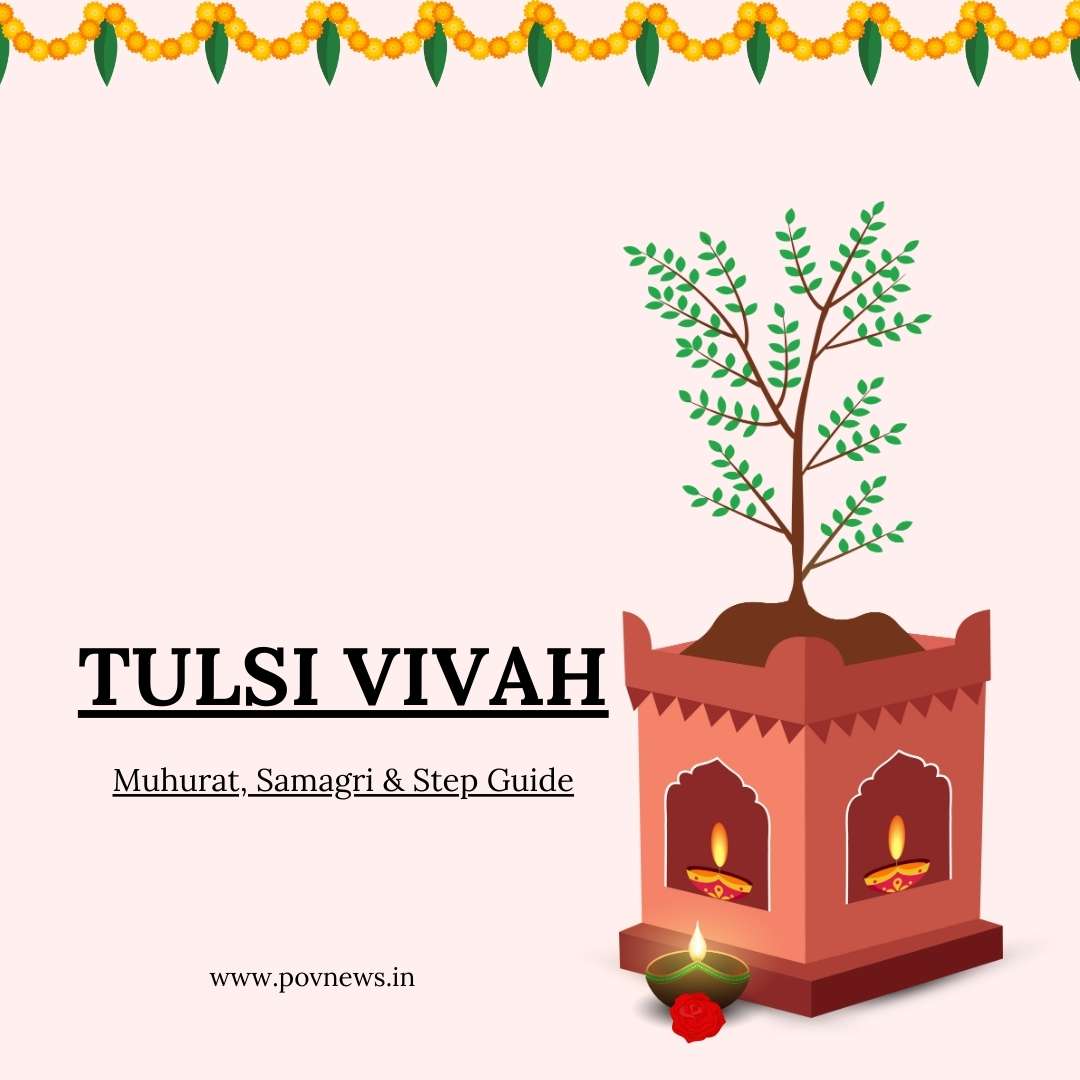Why Tulsi Vivah Matters
Tulsi Vivah marks the sacred marriage of the holy Tulsi plant, considered Goddess Lakshmi’s incarnation, with Lord Vishnu in the form of Shaligram. This ritual not only symbolizes divine union but also opens the door for prosperity, harmony, and auspicious beginnings at home. Families across India celebrate it with devotion, especially after the end of Chaturmas. Performing it at home brings blessings of wealth, marital bliss, and positive energy.
Muhurat: The Auspicious Time
The right muhurat ensures that the ritual radiates maximum blessings. Tulsi Vivah is usually performed between Prabodhini Ekadashi (Shukla Paksha Ekadashi of Kartik month) and Kartik Purnima. In 2025, the most favorable dates fall between November 9 and November 13.
Astrologers recommend performing the marriage ceremony during shubh lagna or abhijit muhurat in the evening, when families can gather and participate wholeheartedly. Therefore, before starting, always check the local panchang to confirm the exact timings.
Samagri Checklist for Tulsi Vivah
For a complete and spiritually fulfilling ritual, you need the following items:
- Tulsi plant (decorated with red chunari, bangles, and ornaments)
- Shaligram stone or Lord Vishnu idol
- Kalash filled with water, topped with mango leaves and a coconut
- Puja thali with roli, kumkum, turmeric, sandalwood, and rice
- Fruits, sweets, and dry fruits for offering
- Flowers and garlands for decoration
- Diya with ghee for lighting throughout the ceremony
- Sugarcane sticks to form a wedding mandap for Tulsi
These items not only complete the setup but also bring festive energy into your home temple.
Step-by-Step Guide to Perform Tulsi Vivah at Home
- Prepare the Mandap – Place sugarcane sticks around the Tulsi plant and decorate it with flowers, chunari, and jewelry.
- Set up Lord Vishnu/Shaligram – Place the idol or Shaligram near Tulsi, facing the plant.
- Invoke Deities – Light a diya and chant Vishnu and Tulsi mantras to invite divine presence.
- Kanyadaan Ritual – Symbolically give Tulsi as the bride. Offer turmeric, kumkum, rice, and betel nut while chanting kanyadaan mantras.
- Exchange Garlands – Place flower garlands on both Tulsi and Vishnu/Shaligram, representing the wedding ritual.
- Tie the Knot – Use a cotton thread to tie the chunari of Tulsi to Lord Vishnu’s idol, symbolizing their sacred union.
- Offer Bhog and Aarti – Distribute sweets, fruits, and prasadam to family members after completing the puja.
Spiritual Benefits of Tulsi Vivah
- Couples gain marital bliss and stability.
- Unmarried devotees attract harmony and good alliances.
- Families experience peace, wealth, and divine grace at home.
- The ritual also purifies the environment with positivity and devotion.
Conclusion: Invite Prosperity with Devotion
Tulsi Vivah is more than a ritual—it is a celebration of divine love. By following the right muhurat, arranging proper samagri, and performing each step with faith, you can transform your home into a sacred space. While grandeur adds charm, devotion creates true magic. When Tulsi unites with Vishnu, prosperity and happiness naturally enter your home.


